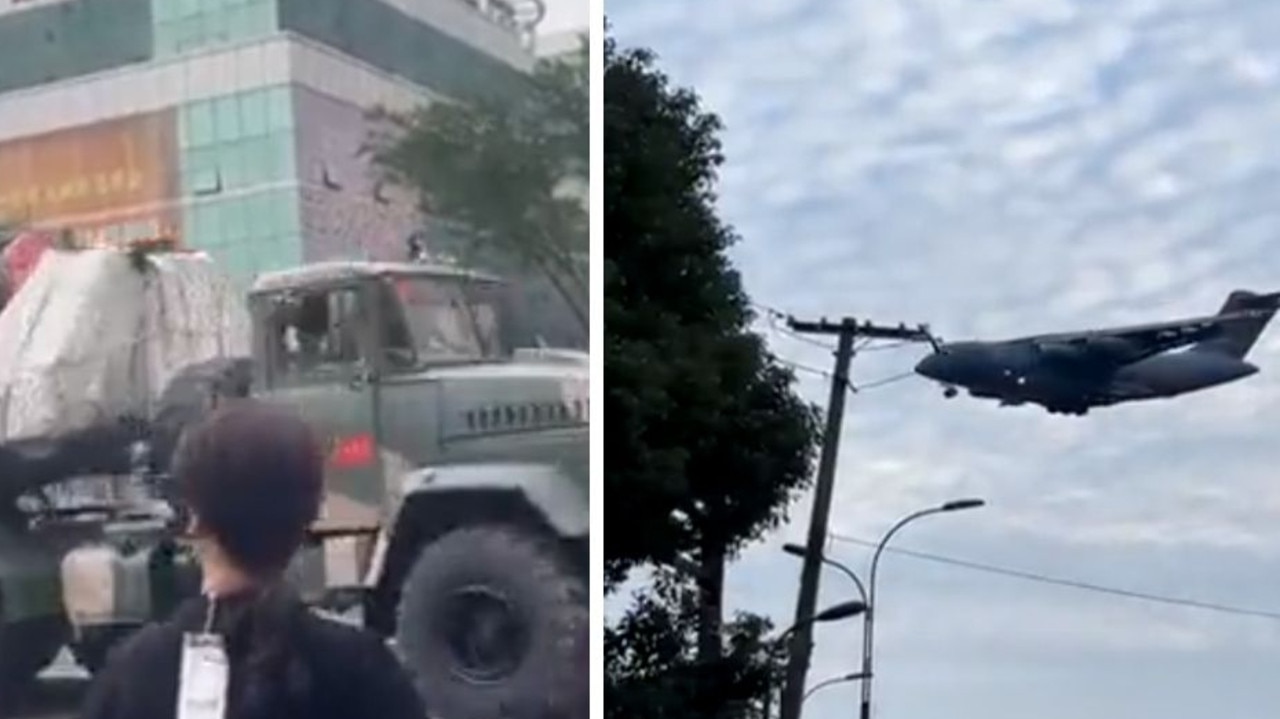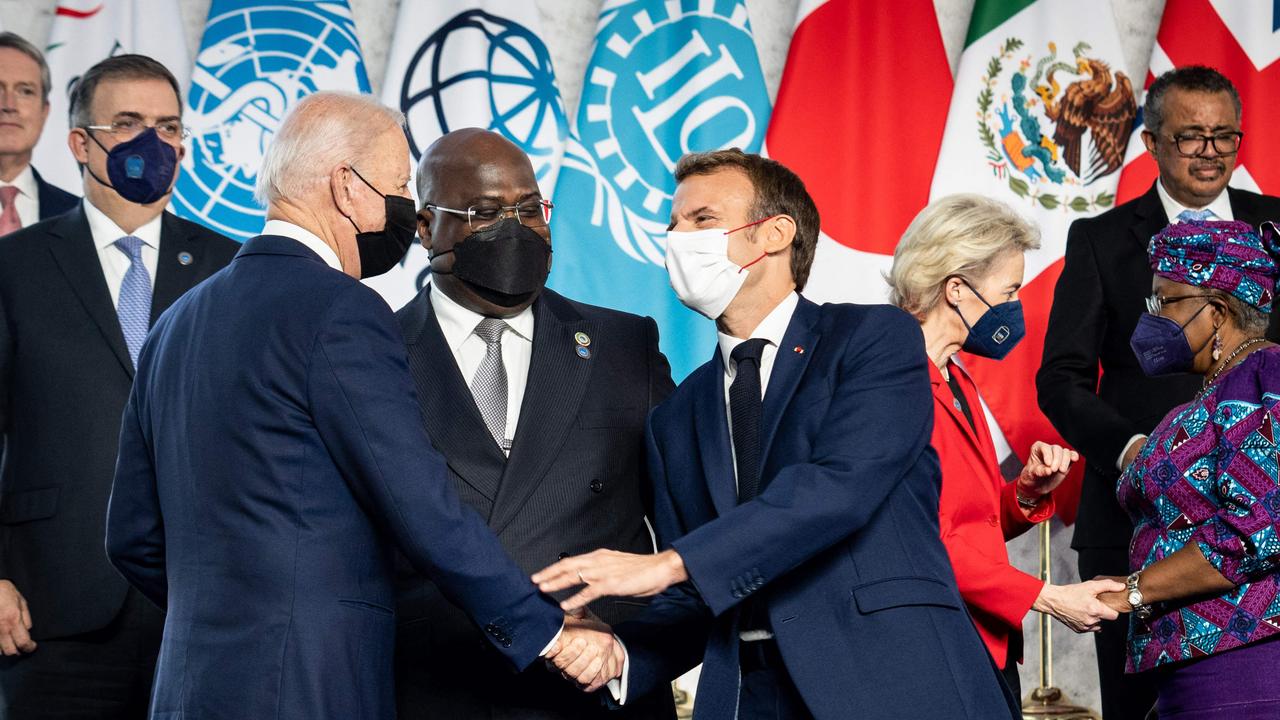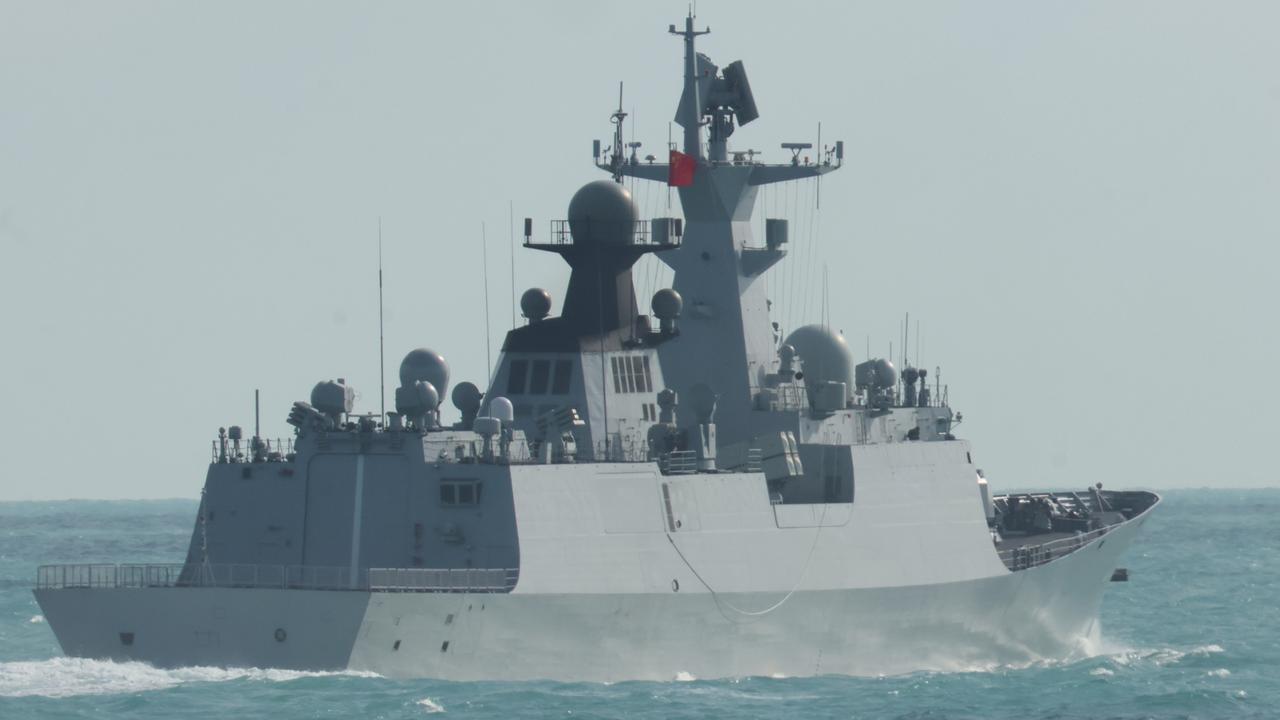China’s actions show early signs of Taiwan invasion
The rumour mill has been in overdrive in China this week with rushed statements and alarming videos adding to the fear over tensions with Taiwan.

Orders to stockpile food. Armoured vehicles moving through city streets. A warning to reservists warned to prepare. Party players beating the drums of war.
Little wonder China was awash with rumours about an imminent invasion of Taiwan this week.
It was a perfect alignment of seemingly related incidents. And Chinese netizens immediately leapt to conclusions.
Hundreds of millions of social media posts swarmed over every aspect of the apparent mobilisation. Every sentence from every Communist Party and People’s Liberation Army communication was disassembled and rebuilt to fit the narrative.
War – with Taiwan – now.
Unverified videos of Chinese army allegedly deploying weapons in Zhejiang province to prepare for attack on Taiwan have been wildly spread in China. 1/4 pic.twitter.com/Nz1garholA
— Eileen Chang 😷⛑🥽🌂🧤ðŸ‡ðŸ‡° (@EileenEChang) November 2, 2021
The Chinese Communist Party’s censorship and propaganda machine was caught off balance.
This was the nationalistic message they’ve been pushing in recent years. But it had spun out of their control.
AI algorithms designed specifically to mould and contain the online musings of China’s citizens – quick to block discussion about “Winnie the Pooh” or “emperors” – saw nothing wrong with this upswelling on militaristic sentiment.
Which is why it took a concerted effort by the nation’s Communist Party mouthpieces to bottle up a message they themselves had been hyping.
Big, if true …
The United Nations Climate Change Conference had been a centrepiece of Beijing’s political posturing for months.
This was Chairman Xi’s mandated territory. China, he insisted, was streets ahead in combating the world’s greatest challenge. And his efforts were putting world leaders – such as Presidents Joe Biden and Emmanuel Macron – to shame.

So when he failed to back the narrative with his august presence in Glasgow, it was bound to raise eyebrows.
Why did he stay home? He has a personally significant Communist Party meeting to deal with in the weeks ahead. There he will need to ram-through legislative change to entrench himself in China’s top job for as long as he desires.
And he’s repeatedly staked his future on “reintegrating” Taiwan.
Then came an alarming instruction from the Chinese Ministry of Commerce: “Families are to store a certain amount of daily necessities as needed to meet daily life and emergencies.”
The given purpose was somewhat vague. There may be “disruptions” over winter.
Local authorities were also instructed to prepare to release fruit and vegetable reserves “at an appropriate time”.
Alleged China’s deployment of weapons 3/4 pic.twitter.com/9XiJQEzJQq
— Eileen Chang 😷⛑🥽🌂🧤ðŸ‡ðŸ‡° (@EileenEChang) November 2, 2021
Then a text message of uncertain origin began circulating. It urged military reservists to “get ready for being recalled at any time”. The situation with Taiwan, it added, was “very grim”.
It triggered a chain reaction. Soon seemingly innocent government pronouncements were being picked apart online for their sinister potential. Videos of military vehicles being moved about China’s cities were being presented as evidence of mobilisation.
Amid it all, an obscure tweet of Chinese militaristic poetry by tech billionaire Elon Musk and a 1959 video of People’s Liberation Army (PLA) generals chanting that they would “plant the flag of victory on Taiwan” suddenly went viral.
Soon Weibo – China’s state-controlled version of Twitter – was alive with speculation.
Clear and present danger
The threat of war with Taiwan is very real.
Tensions across the Taiwan Strait have flared, with a record number of PLA air force combat aircraft making their presence felt near the island nation last month.
Then, last week, Taiwan’s President Tsai Ing-wen for the first time publicly announced the US had been sending US special forces troops to train Taiwanese troops.
There was nothing new about this. It’s been going on for decades. It’s been reported many times before.
What was new was that Taipei had admitted it. And that was a move bound to anger Beijing.
Alleged China’s deployment of weapons 4/4 pic.twitter.com/5wYCmkuoXN
— Eileen Chang 😷⛑🥽🌂🧤ðŸ‡ðŸ‡° (@EileenEChang) November 2, 2021
It was this sequence of events that prompted the US Chairman of the Joint Chiefs of Staff, General Mark Milley, to attempt to put a dampener on the escalating tension.
“Based on my analysis of China, I don’t think that it is likely in the near future — being defined as, you know, six, 12, maybe 24 months, that kind of window,” he said. “Having said that, the Chinese are clearly and unambiguously building the capability to provide those options to the national leadership if they choose at some point in the near future.”
It struck a note of discord.
Previously, official US statements warned any possible attempt by Beijing to assimilate Taipei would likely take place “within six years”.
General Milley’s words tilted the balance towards sooner rather than later.
And that meshed with Taipei’s own threat assessment.
Taiwan’s defence minister, Chiu Kuo-cheng, said late last month that he expected a full-scale attack as soon as 2025.
Chinese whispers
Beijing’s attitude engineers quickly went into damage control. This wasn’t the official Party line.
On Wednesday, the Junzhengping People’s Liberation Army social media account suddenly went on the offensive.
It denounced the “vile” Weibo mobilisation rumours as a “malicious fabrication”.
“This kind of rumour being able to spread widely is linked to the heated public discourse on the topic. It’s very easy for the public, who do not know the truth, to interpret this incorrectly, leading to unpredictable consequences,” a chastising post reads. “It will not only cause negative impact to the state, the military and society, it could also lead to severe consequences.”
Earlier Tuesday, an editorial in the respected China Economic Daily urged the general public to not “over-read” the Ministry of Commerce food-hoarding instruction. It accused Weibo users of having “too much of an overactive imagination”.
China’s food supply is sufficient with no panic buying in Beijing and Shanghai, following official notices about stocking up on daily necessities on Tue. Officials said the notices aim to prepare residents for potential emergencies. https://t.co/oar4KfPJWVpic.twitter.com/g94KnFf8sJ
— Global Times (@globaltimesnews) November 3, 2021
The advice to hoard food was all because of “supply-chain concerns”, it insisted.
There are plenty of them.
The Covid-19 pandemic has disrupted global trade. And China’s food imports are just as stuck in international shipping queues as Australia’s Christmas shopping.
State broadcaster CCTV took up the mission, screening an interview with Ministry of Commerce official Zhu Xiaoliang. He attempted to explain that widespread bad weather had prompted supply problems and soaring prices. In particular, unseasonally severe storms in October had flooded crops in Shandong Province – the nation’s biggest vegetable producer.
The warning to stockpile goods, he said, was to ensure minimal disruption as winter sets in. And a fresh outbreak of the Delta strain of Covid-19 had made matters even more uncertain.
Zhu added that any further inference was an “over-reading” of a single sentence in the Ministry’s original guidance.
It was a significant concession.
Whether or not the Chinese Communist Party can feed its 1.4 billion population is not normally an approved topic of discussion.
And that’s what triggered the rumour-mill in the first place.
Jamie Seidel is a freelance writer | @JamieSeidel






